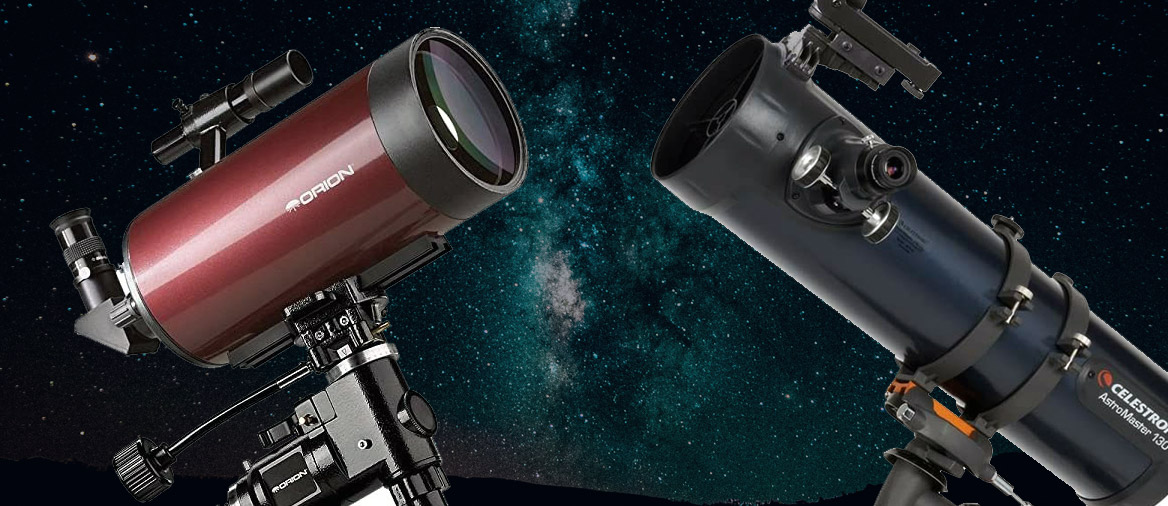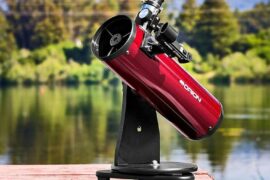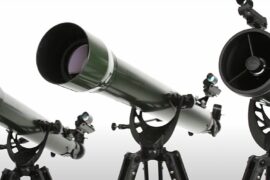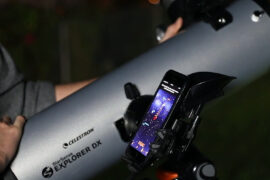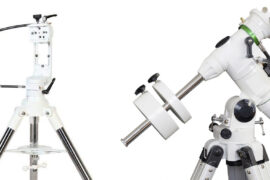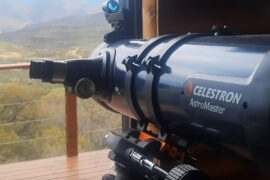One of the decisions that can be harder to weigh when it comes to choosing a new telescope is what type of telescope is best for your particular needs. There are so many types to choose from: Refractors, Newtonians, Dobsonians, various types of Cassegrains, etc. The options can get overwhelming.
But one of the hardest pairs to choose from is when you face Maksutov-Cassegrain vs Newtonian telescopes because they are very similar to each other in many categories. When you compare them to refractors or Dobsonians, they have clear advantages and disadvantages, but when you compare them to each other, things can get confusing.
So here are the differences, pros, and cons of each other to help you make a more educated choice.
To keep things short we will sometimes refer to Maksutov as MAKs and Newtonians as newts.
Differences between Maksutov-Cassegrain and Newtonian/reflector telescopes
Design and focal length
Newtonians transmit light by using a long tube and reflecting the captured image into a second mirror that sends it to the eyepiece. The light only travels through the tube once, which makes the focal length of a newt almost the same as the length of its tube.
On the other hand, MAKs pack a longer focal length into a smaller tube and a more compact design. How is that even possible? Well, that’s because the design of Maksutovs is very clever. The light travels back and forth across the tube 3 times thanks to the secondary mirror at the end of the tube.
The following diagrams show how each transmits the light.
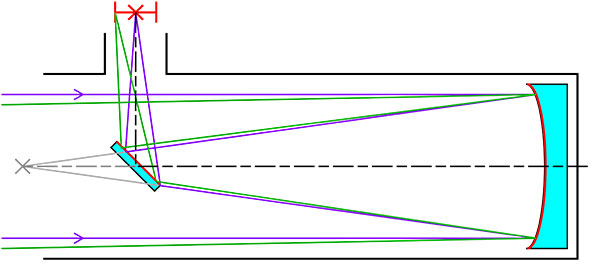
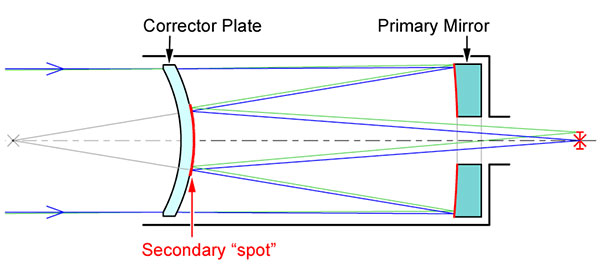
Optics
The difference in design between these two types has an effect on the image you see in the end.
First, because the light is transmitted more “directly” in the tube, Newtonians tend to show a brighter image while Maksutovs’ are slightly dimmer. The difference is not too significant between models of similar quality and manufacturer, but it’s more considerable when you compare a well-known manufacturer against a budget brand.
Point to the newts.
On the other hand, Maksutovs show sharper images with better contrast thanks to the size and shape of the inner mirror and smaller field of view.
Point to the maks.
In simple terms, these differences are going to result in this:
Maksutovs are better for watching planets, Newtonians are better for watching deep space objects (galaxies, nebulas, etc).
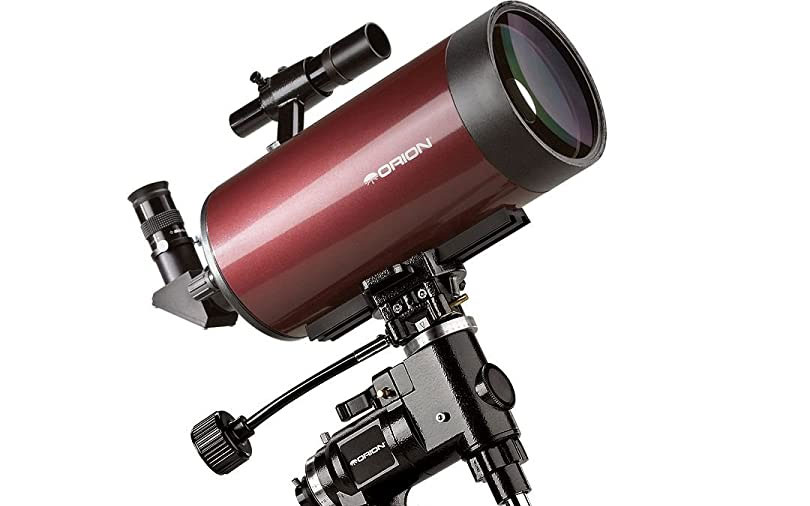
Weight and size
Because of the smaller tube in Maksutovs, they tend to weigh less than Newtonians. This makes them easier to pack and carry if you want to take them to the field. On average, when you compare two telescopes of the same aperture by the same manufacturer and with the same mount and tripod, the Newt is about 30% heavier.
Price
Newtonians are a simpler design that has been around for centuries so their manufacturing process is much simpler and cheaper. This, in turn, results in them being considerably cheaper than MAKs. Sometimes even as much as 50% less expensive when you compare telescopes of the same aperture made by the same brand.
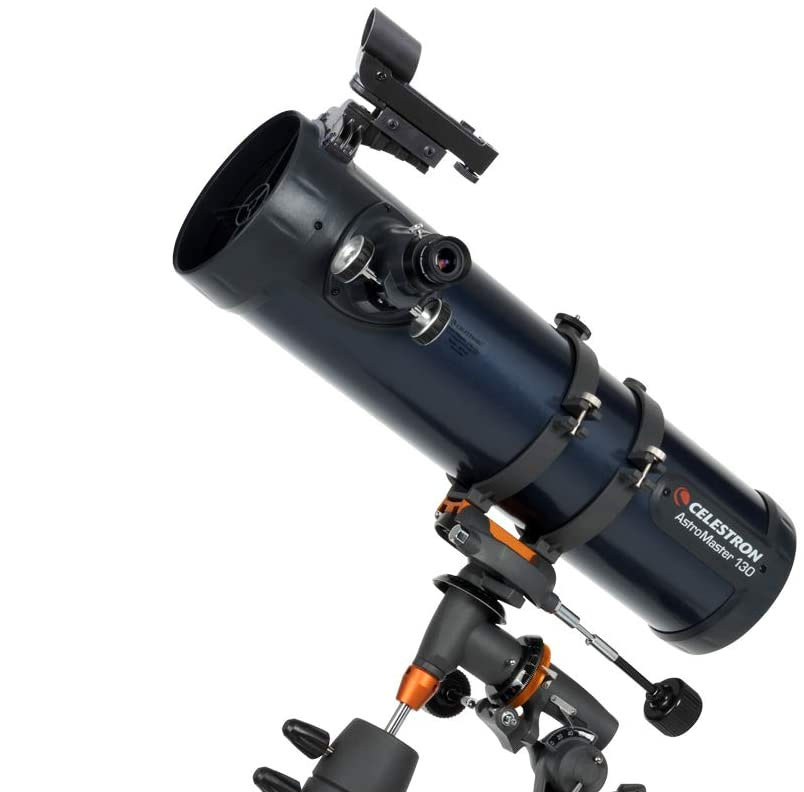
Maintenance
Another important thing to consider is collimation. If you have never used a telescope or if you are coming from using a refractor that never or almost never needs maintenance, you might not know that every once in a while the mirrors in the telescope need to be re-aligned or they’ll start showing small optical errors. This process is called “collimation” and while it sounds intimidating, anyone can do it with a little bit of practice.
Again, they both have pros and cons in this area because Newtonians do require collimation every few months, but it is easy to do, while Maksutovs need to be collimated maybe once every couple of years, but they are trickier to collimate.
Temperature Acclimation
Telescopes need to be at ambient temperature in order to perform at their best. This means that if you bring them outdoors on a cold night from storage where it might have been warmer, it will take a bit for the telescope to settle to ambient temperature. Maksutovs take considerably longer to acclimate. Depending on where you store them, you might want to take them out an hour before you use them to give it time to acclimate. Newtonians on the other hand only take 5 to 10 minutes to do so.
Maksutov-Cassegrain pros and cons
| Pros | Cons |
|---|---|
| Small size | Lower brightness |
| Lighter | More expensive |
| Sharp images | Longer temperature acclimation time |
| Great contrast | Maintenance is trickier |
| Little maintenance necessary |
Newtonian / Reflector pros and cons
| Pros | Cons |
|---|---|
| Cheap prices | Heavier |
| Brighter images | Takes more space |
| Low obstruction | Requires maintenance more often |
| Available in more sizes and brands | Can show comas |
| Short acclimation time |
Conclusions
As you can see, both types have many advantages and disadvantages. But hopefully, you now have the tools to know which one is the better fit for you. Let’s make a quick recap and put everything together to get to more concrete conclusions:
- Newtonians are better for viewing deep space objects
- Maksutov-Cassegrains are better for observing planets and the Moon
- Newtonians are better backyard telescopes
- Maksutovs are better travel telescopes
- Newtonians have more variety in sizes, brands, and prices
- Maksutovs are more versatile and require less maintenance
Enjoyed this article?
Get daily 10-minute PDFs about astronomy to read before bed!
Sign up for our upcoming micro-learning service where you will learn something new about space and beyond every day while winding down.

